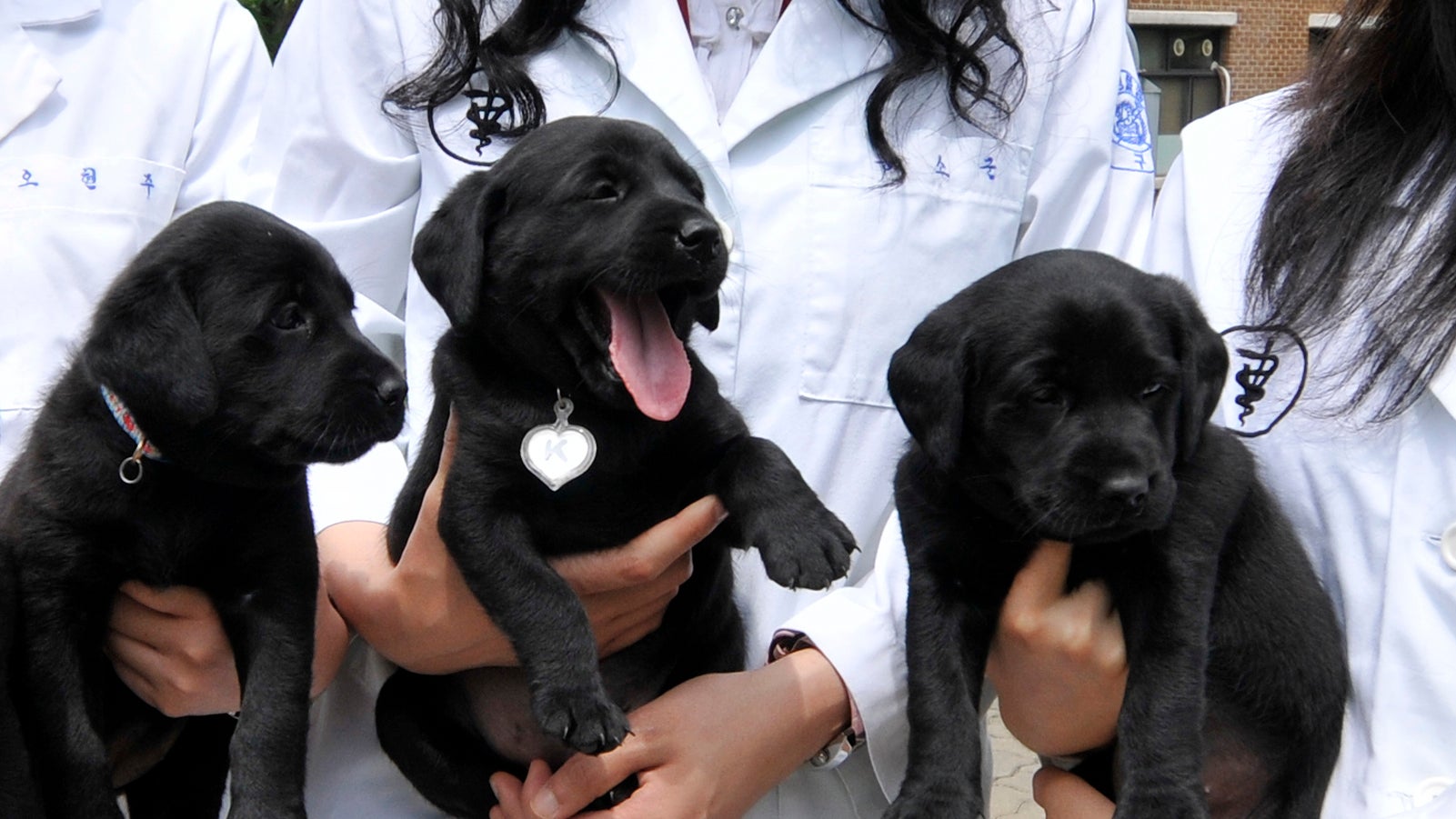Your dog could hold the key to cancer treatments of the future
Doctors and vets both receive an expensive subsidized education. They both train for at least five years at an enormous cost to the taxpayer. In the UK, recent increases in tuition fees don’t appear to have had any effect on the demand for medical and veterinary education, with several new schools being established in both fields to meet growing demand.


Doctors and vets both receive an expensive subsidized education. They both train for at least five years at an enormous cost to the taxpayer. In the UK, recent increases in tuition fees don’t appear to have had any effect on the demand for medical and veterinary education, with several new schools being established in both fields to meet growing demand.
But although doctors and vets are supposed to speak the same clinical language, the sad truth is that medicine and veterinary research have become separate disciplines. Members of two of the most intelligent and ambitious professions barely talk to each other.
Situations where veterinarians and physicians might cooperate successfully and productively are exceptions rather than the norm. If they worked together more closely, they could speed up the translation of new treatments from laboratory and companion animals to humans.
They would also have a greater chance of tackling the common health problems that humans and animals face today. After all, a problem shared is a problem halved. Men are not mice and many treatments that are developed in pre-clinical animal models do not translate well to humans. However, humans and companion animals are much closer and since many of our pets suffer from the same chronic diseases that reduce our longevity and quality of life a collaborative approach is likely to be more fruitful.
Cancer collaboration
Cancer is one area in particular where greater collaboration between doctors and vets could benefit both sides. The incidence of cancer is steadily growing across the world because of the expanding aging population and the rise in obesity. Many forms of cancer are essentially the same in humans and dogs. By studying osteosarcoma (the most common form of bone cancer) in dogs we can learn about aggressive bone cancers in humans and develop safer, more specific and more effective treatments for both species.
Dogs have a shorter lifespan than humans. Therefore studying and testing new cancer treatments in dogs across their lifetime would be far quicker than making the same studies over the decades of a human life. This kind of research would be done more cheaply and the data sharing will benefit both species. And while plenty of cancer research is done in mouse models, the data from mice often does not translate well to human patients. So shifting the focus on to dogs would bring closer benefits to humans.
Clearly, the benefits for human and animal treatments are not mutually exclusive. If the disciplines of human and veterinary oncology were brought closer together, some of the biological therapies being developed for human cancer could benefit our pets.
Where there has been greater communication between the two disciplines, new treatment approaches have emerged as a result. Limb-sparing surgery in dogs with osteosarcoma led to the same thing being done in human adolescents years later. This has had a huge impact on human cancer patients, giving children with osteosarcoma the chance to keep the limb in which the tumor was located.
Another example is the melanoma vaccine that was initially developed for humans and animals in parallel. While it is still being trialled for humans, it has taken a life of its own in veterinary medicine and a version for dogs has become the first therapeutic cancer vaccine approved for human or animal use.
The only cancer drug approved specifically for dogs, toceranib (marketed as Palladia), started with testing in laboratory dogs with mast cell tumors. Subsequent work focused on human cancer and more toceranib drugs were developed, creating a multi-billion dollar industry.
Although many people may think that this area can progress in human oncology without any veterinary involvement, vets can still help because they can use dogs to study endpoints and biomarkers in a shorter timeframe. This is much more difficult to do with human patients. The US Food and Drug Administration has now approved several of these kinds of drugs that were originally developed for use in dogs.
One Health
Multidisciplinary collaboration is the only way to make sure that advances in basic science can be translated into new diagnostics, therapeutics and most important of all, preventive strategies for the most common diseases in the 21st century.
With this in mind, some scientists argue for the introduction of the “One Health” concept, which aims to unite human and animal medical practice as two branches of “One Medicine”, particularly through greater openness and communication.
So what can be done to bring the two sides together? In my opinion, funding agencies, charities and major foundations should put more funding into joint research initiatives. I would like to see the likes of the Gates Foundation create new funding calls and collaborative initiatives that require equal partnership and collaboration between medical and veterinary colleges.
The One Health concept is still evolving. But doctors and vets still don’t communicate enough. Unless things change, both humans and animals will continue to suffer needlessly.